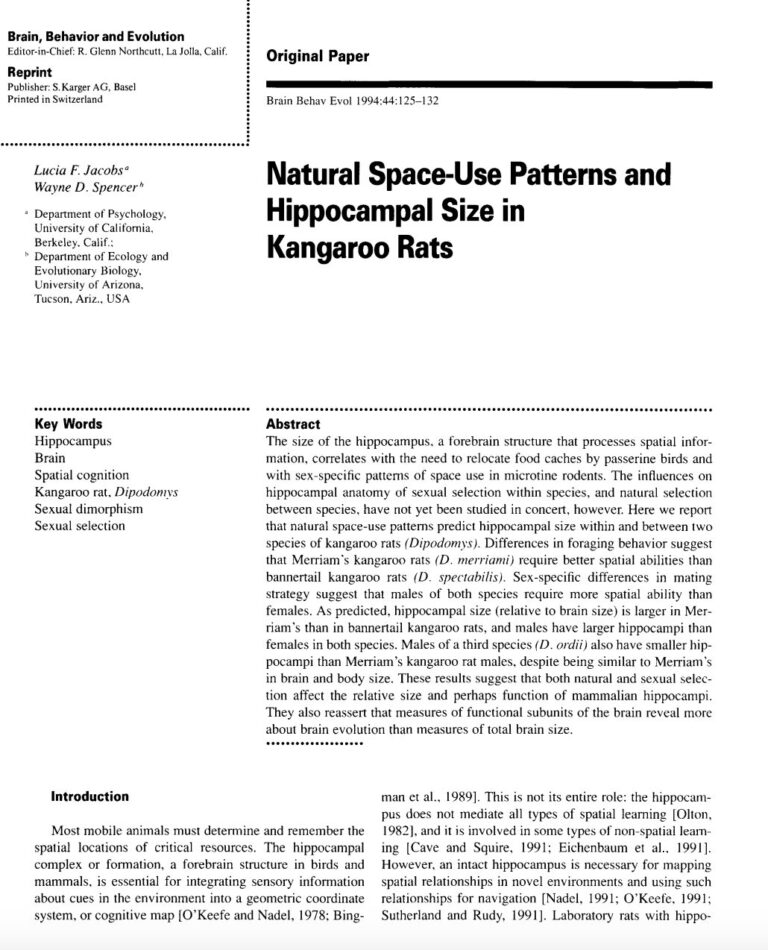The size of the hippocampus, a forebrain structure that processes spatial information, correlates with the need to relocate food caches by passerine birds and with sex-specific patterns of space use in microtine rodents. The influences on hippocampal anatomy of sexual selection within species, and natural selection between species, have not yet been studied in concert, however. Here we report that natural space-use patterns predict hippocampal size within and between two species of kangaroo rats (Dipodomys). Differences in foraging behavior suggest that Merriam’s kangaroo rats (D. merriami) require better spatial abilities than bannertail kangaroo rats (D. spectabilis). Sex-specific differences in mating strategy suggest that males of both species require more spatial ability than females. As predicted, hippocampal size (relative to brain size) is larger in Merriam’s than in bannertail kangaroo rats, and males have larger hippocampi than females in both species. Males of a third species (D. ordii) also have smaller hippocampi than Merriam’s kangaroo rat males, despite being similar to Merriam’s in brain and body size. These results suggest that both natural and sexual selection affect the relative size and perhaps function of mammalian hippocampi. They also reassert that measures of functional subunits of the brain reveal more about brain evolution than measures of total brain size.
Natural Space-Use Patterns and Hippocampal Size in Kangaroo Rats


